Chrysanthemums, commonly known as Mums, are a diverse group of flowering plants. They are perhaps best known for their showy fall blooms. Each plant can be covered with brightly colored flowers in an array of seasonal hues. These blooming beauties add zest to any autumn-themed outdoor display.
Mums can be easily grown in pots, planters, and in the ground. They are hardy perennials that can overwinter in zones 5-9, as long as their roots are protected. Mums are shallow-rooted plants and will benefit from a thin layer of mulch in the summer to help keep roots moist, and a thick layer of mulch in the winter to protect roots from freezing.
Mums grow vigorously until frost. After the first frost, the leaves and stems will wilt, turn black, and die back. If you’ve just had a night or two that dipped below zero, your mums will need to be either safety overwintered, or composted.
Mums typically look fantastic when first purchased. A full mound of green leaves covered with vigorous blooms. But after a while, they start to look a bit old. The flowers may fade, the leaves may wilt, or the plant may appear to be dying. There are several factors that can cause your Mums to look sick. Let’s now look at some of the most common reasons your Mums may be wilting or dying, and what you can do about it.
Why Are My Mums Dying?
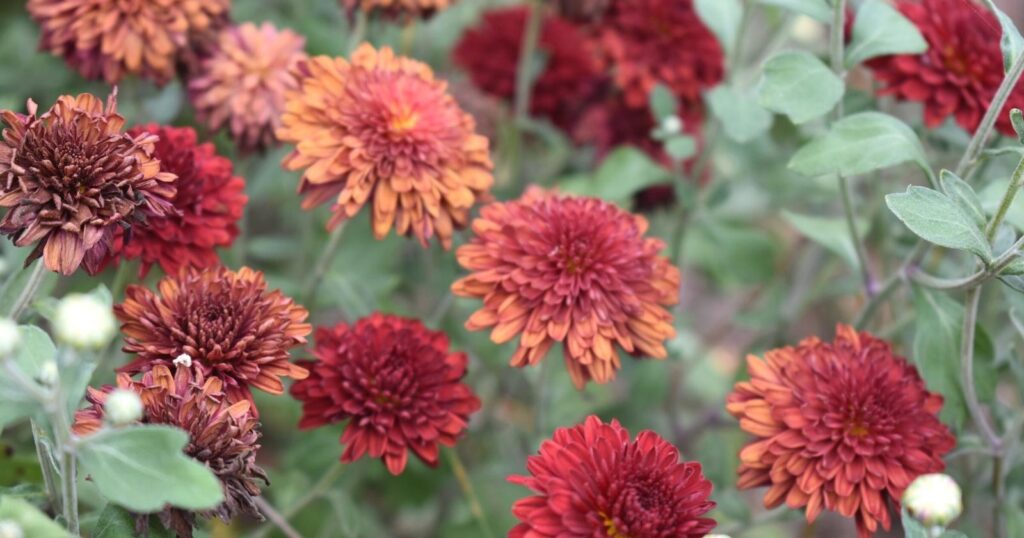
Mums like full sun to part shade. They need at least 6 hours of bright sunlight each day to continue to look their best. They will tolerate a little shade as long as they get their minimum amount of bright sunlight. Mums grown in shade probably won’t die, but they will look long and leggy, and probably won’t bloom well.
You bought some potted Mums in full bloom, and they looked great. You set them outside in a sunny spot and enjoyed their perky flowers. But now, for some reason, they don’t look healthy anymore. What could be the problem? Below are 5 things to look for, and what you can do to help your Mums revive.
Were They Hit by Frost?
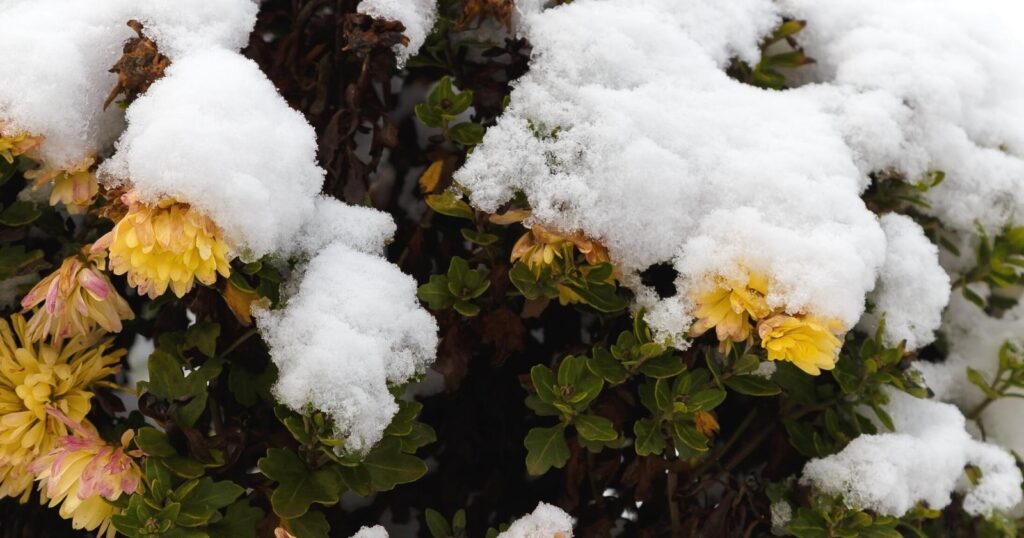
First, let’s talk about frost. If your Mums have been hit by a hard frost, they will die back. This is part of their natural process and is to be expected. If you bought potted mums and plan to keep them for just one fall bloom, then they will eventually be killed by frost.
You can, however, protect them from the first several frosts by covering them with a sheet or towel overnight. You can also move them into a cool, frost-free location overnight when frosts are expected. Then when the morning temperature rises above freezing, simply uncover them again or move them back outside. You can extend the life of your plants by doing this, but eventually, they will succumb to freezing.
You can also overwinter potted mums in a cool dark location, such as an unheated garage. As long as the roots don’t freeze, potted Mums can survive the winter. You can’t just put them in the garage and forget about them for the winter. Check on them regularly and try to keep the roots moist. You won’t need to do much watering, but if they completely dry out, they will also die. In the spring, after danger of frost, return your potted plants outside and they should grow back.
If you live in climate zones 5-9, Mums can generally overwinter in the garden. The sooner you are able to plant them out, the better. Planting early in the fall gives the roots a chance to grow a little and get established. When it’s time for the first frost, add a generous layer of mulch around your Mums. Make sure the soil stays moist (but not wet) through the winter. In spring, after danger of frost, remove some of the mulch and your plants should grow back.
Is the Soil Too Moist?
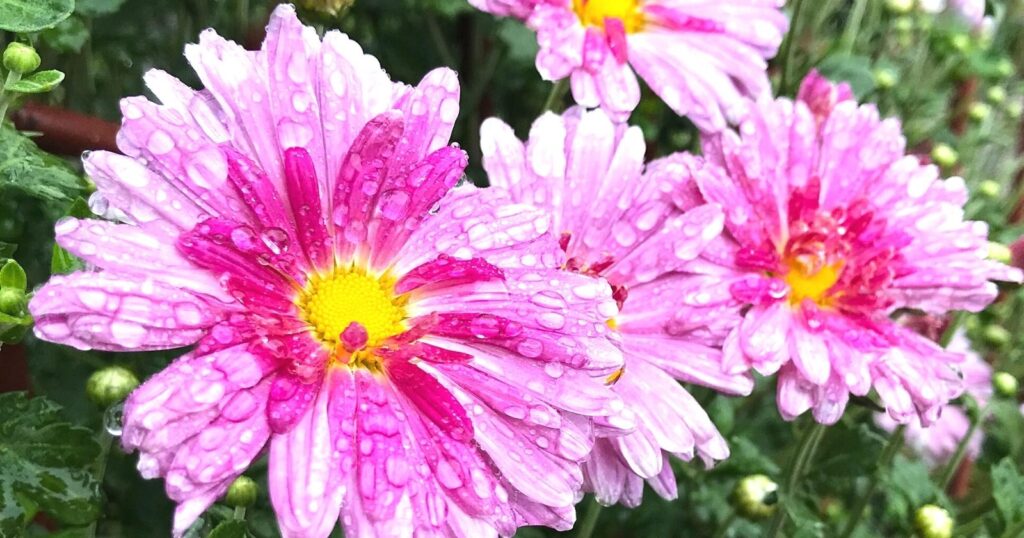
During the active growing season, the most likely reason your mums are wilting or dying is dry soil. Mums are thirsty plants and like moist soil. Mums grown in pots and containers tend to dry out quickly. Check the soil with your finger. The soil should feel moist to the touch, but not wet or squishy.
Is the soil very dry? If the soil feels dry to the touch, give your plant a drink of water. You can also check potted plants by picking up the pot. If the pot feels very lightweight and dry to the touch, your plant is definitely in need of water. Water liberally until the water starts to come out the bottom of the pot (make sure your pot has good drainage holes in the bottom).
Is the soil very wet? If the soil feels very soggy, your plant is too wet. A Mum sitting in wet, soggy soil will start to droop, and eventually the leaves will turn soft and black and die. Mums are prone to root rot from sitting in wet soil. Make sure your pot has drainage holes and that the plant isn’t sitting in a pool of water.
Once the roots rot, there isn’t anything you can do to save your plant. If the moisture issue is caught early enough, however, you can promptly remove the plants from the saturated soil. Transplant them into a pot with drainage holes and filled with loose, lightweight, well-drained soil, and make sure not to overwater them.
Are There Any Pests?
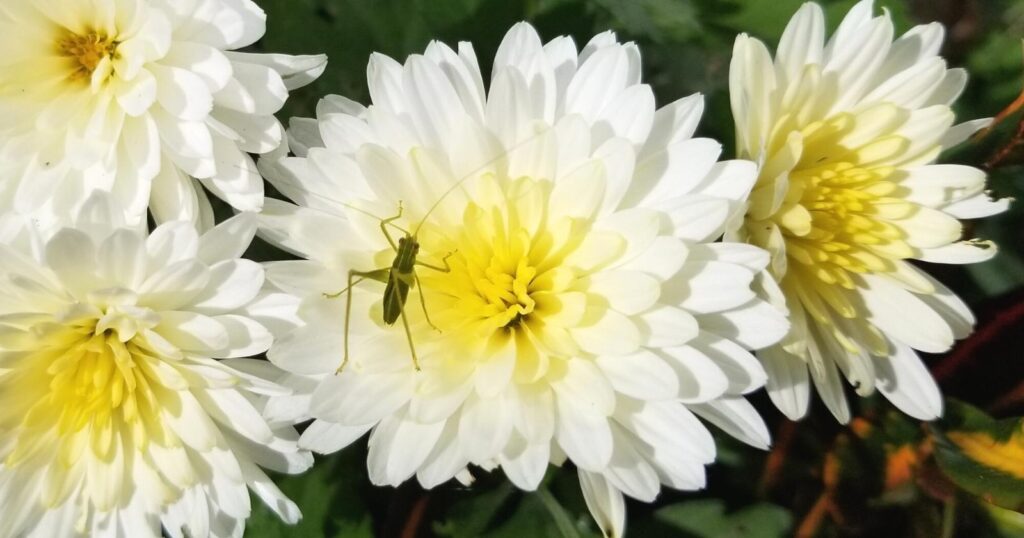
Mums tend to be resistant to many pests and diseases. Occasionally, however, they may develop an insect infestation, such as aphids. If you see clusters of little bugs on the leaves, they are probably sucking plant juices and harming your plants. Infested plants may start to wilt and simply look sick.
Aphids can often be controlled by aiming a strong spray of water at the plant leaves every day to knock off the bugs. This may not remove every single insect, but it can control them enough that the plant doesn’t suffer.
Do They Need Some Fertilizer?
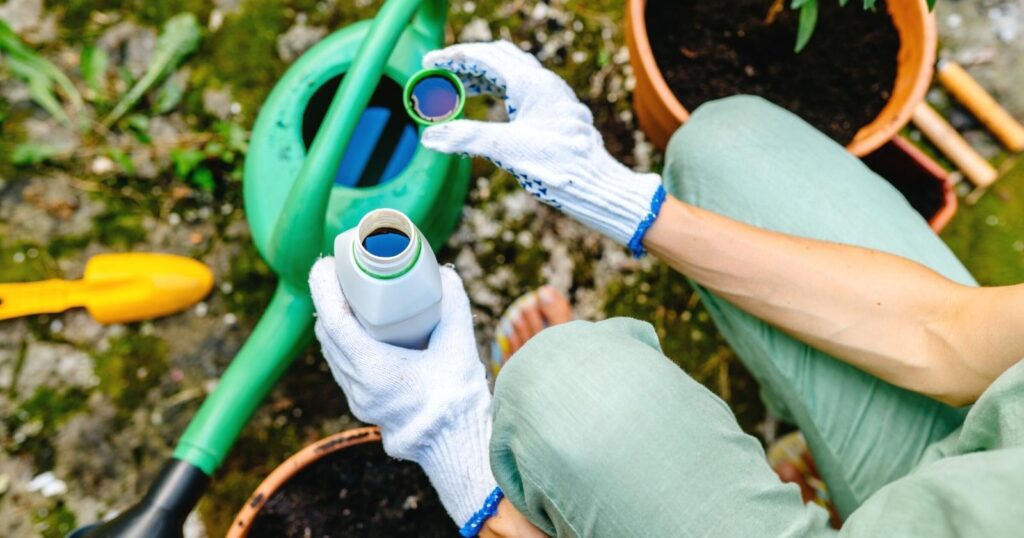
Mums lose their vigor after a while. If you are growing Mums in pots for just one season, you don’t really need to add fertilizer. But if you have been growing potted mums since spring, or you have Mums in the garden, they could likely benefit from a boost of fertilizer. Plants that need fertilizer will not look vigorous and may not be blooming well. The plants probably don’t die without fertilizer, but they also won’t look their best.
Any general-purpose fertilizer for flowering plants should work for Mums. Be sure to carefully follow the directions on the package. You may need to add fertilizer a few times each year during the growing season to keep your plants looking great and with enough energy to generate and maintain full bloom.
Are The Flowers Dead, or the Whole Plant?
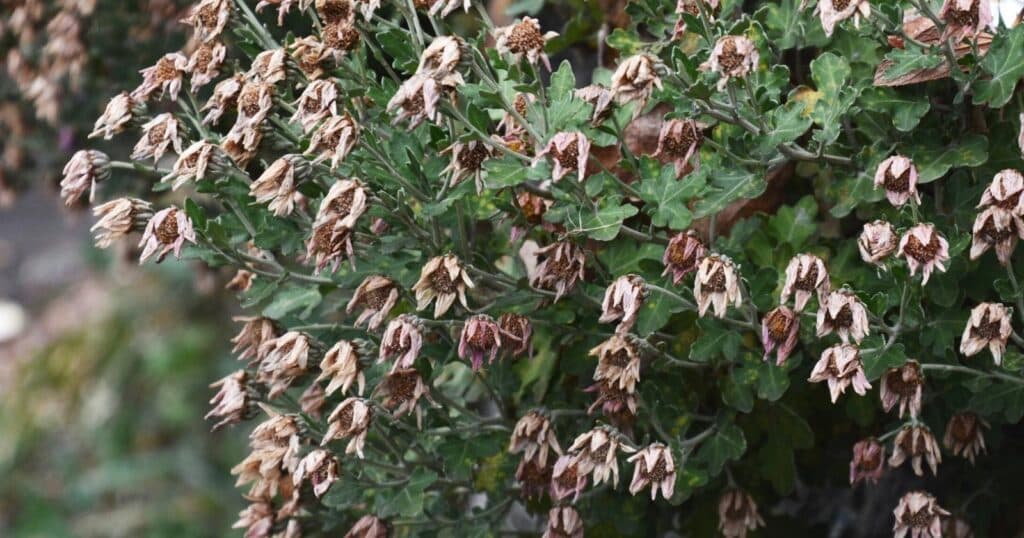
Flowers last for a few weeks, but they don’t last forever. You can expect that after enjoying a profusion of beautiful blooms, your plants will eventually be covered by dead flowers. This is no cause for concern, just part of the natural process. If your plant looks generally healthy, the leaves are green and firm, but the flowers have turned brown and dead, your plant needs to be deadheaded.
Simply pinch off the dead or dying flowers with your thumb and finger, or use a small garden shears. Remove the dead flower heads and part of their stem, down to the first set of leaves below. This will help your plant look more lush and green again. If it’s early enough in the season and there are more flowers waiting to bloom, you may enjoy a second flush of blooms. If it’s late in the season, there may not be enough time for more flowers to develop.
Wrap Up
Mums are a wonderful and versatile addition to the home garden. You can grow them as annuals in pots on the porch or in mixed planters. You can grow them as perennials in the flower garden, where you can enjoy their annual fall blooms. Keep an eye on your Mums so you can promptly detect and correct any issues they may have.
Mums do best with full sun and moist soil. You can help protect them from frost, watch for insect infestations, and deadhead as needed. Once you know what to look for and what to do about it, you can keep your Mums looking healthy and happy.

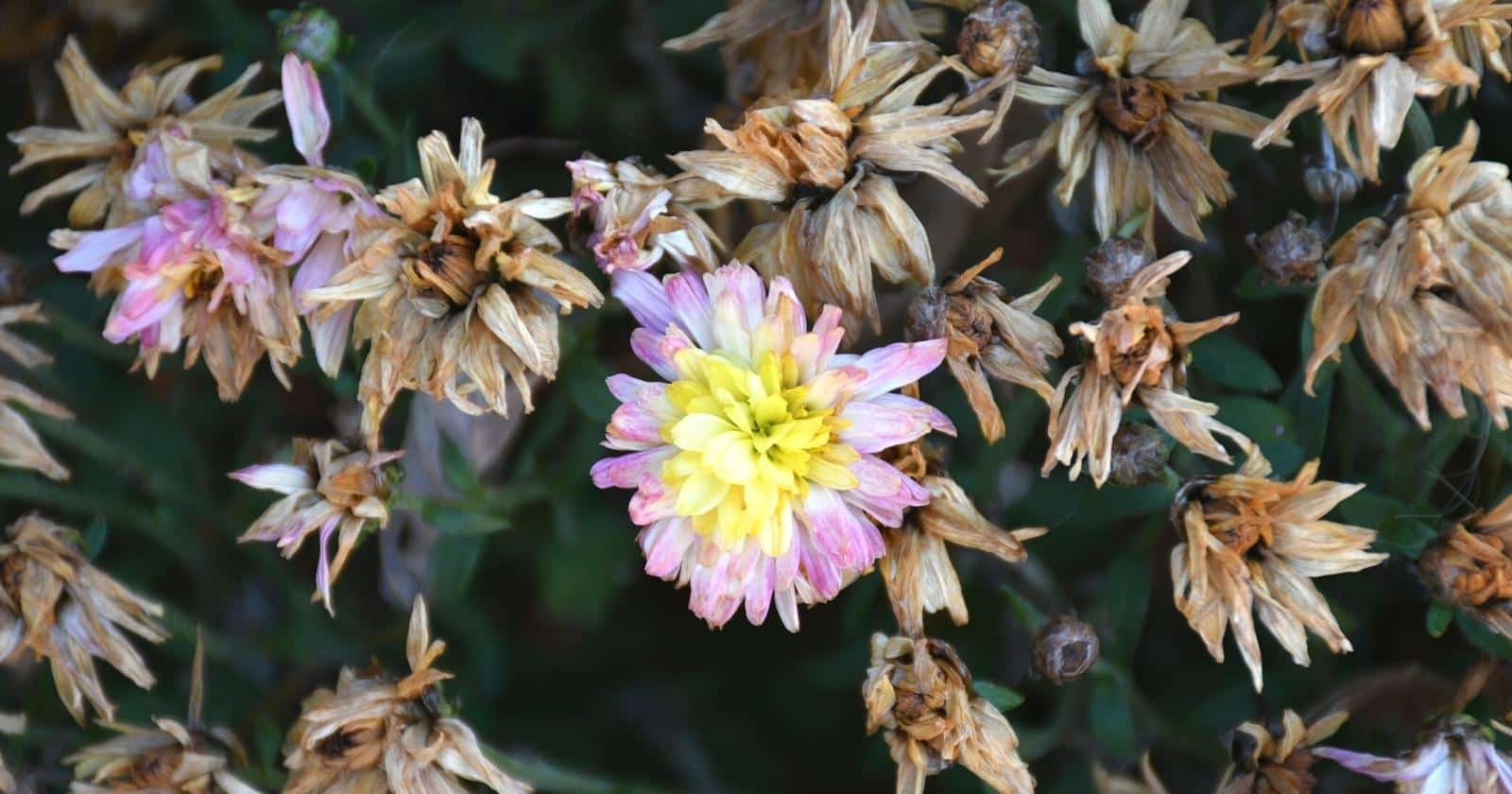
Leave a comment